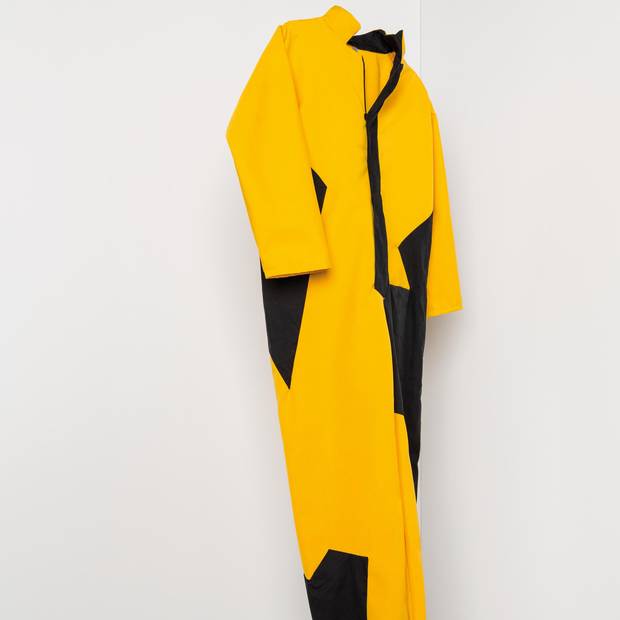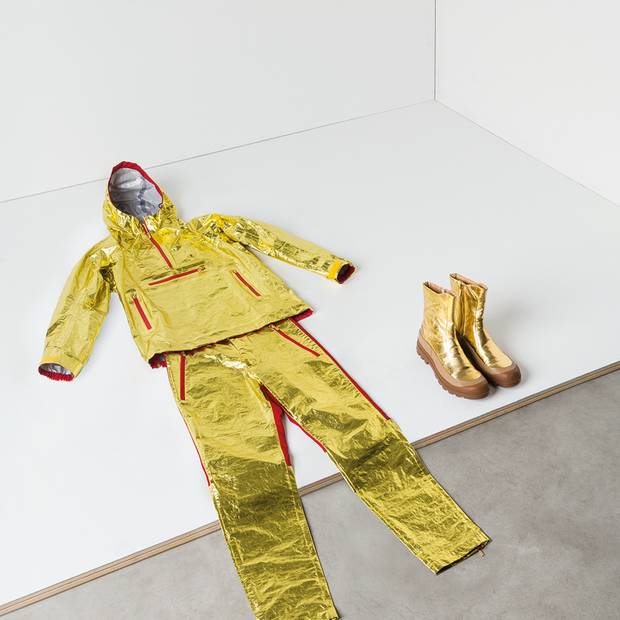In the early 1950s, American fashion photographer Irving Penn set up a studio in Paris. Instead of models in Givenchy haute couture, he invited the city's bakers, window cleaners and firemen to stand before his lens, dressed as they would for a normal day at work. Penn's Small Trades series, shot over two years in Paris, London and New York, grew to include over 200 carefully staged portraits of tradesmen, labourers, artists and professionals, each one's clothing a precise reflection of how he or she spent a workday. In one image, a deep-sea diver peers at the camera through the porthole in his brass helmet. In another, a "lady wrestler" smiles in a leotard and cape. That Penn, whose day job involved shooting covers for Vogue, should be fascinated by these unfashionable wardrobes might have raised eyebrows at the time. But to the modern viewer, these worlds have much in common.
Today, stevedores and laundresses have been replaced by IT consultants and marketing managers, and the clothes people wear to work have changed, too. It used to be that fashion was an expression of means and taste, while workwear was an expression of uniformity and purpose, but as the hard lines between our professional and personal lives dissolve, so too have the definitions of appropriate work attire. Such is the premise for Workwear, a new exhibition at Toronto's Harbourfront Centre that interprets its namesake subject for the topsy-turvy 21st century. For the exhibition – co-produced by Toronto's Italian Cultural Institute and the Milan Triennale – 40 artists, architects and fashion designers from around the world were invited to create a piece of workwear using whatever materials they wished. The results, from the likes of Vivienne Westwood, Issey Miyake, Guggenheim fellow Allan Wexler and Memphis co-founder Nathalie du Pasquier, are as diverse as the creators themselves.
Westwood offered a lumberjack's costume, complete with plaid shirt, wide denim dungarees and a sheepskin hat.
Miyake crafted a reflective spacesuit, with contrasting red zippers and matching gold-hued boots, "meant to be used on our earth, alien place par excellence."
Wexler, whose work explores the connection between architecture and human activity, created a large six-sided wooden hat. While most pieces aren't exactly ready to wear, each one reflects a different way in which clothes speak increasingly to politics, technology and emotion rather than what kind of work we do.
"I am interested in how the concept of work is undergoing great transformations, with clothes being a consequence of these changes," says the show's curator, Milan-based designer, architect and artist Alessandro Guerriero.
"Workwear becomes a disguise and a form of our thoughts. If in the past, it was the image that the world bestowed on us, today it is the image of what we want to be in the world."
As offices turn casual, and legions of people forego donning suits to commute downtown in favour of working from home in head-to-toe athleisure, there's never been a better time to question what exactly one should wear to work – and what those choices say about who we are.
For fashion designers, traditional workwear has long been a rich source of inspiration. Beyond the comfort and functionality of perennial favourites like chore coats and blue jeans, their connotations of strength and stoicism strike a deep chord. For spring 2017, Diesel Black Gold designer Andreas Melbostad (citing inspiration directly from Penn's Small Trades) released a men's collection full of buckles, utility pockets and hickory striped jackets that, despite their trim tailoring, call to mind the purposeful dignity of Penn's tradesmen. "I think that sort of authenticity is a very important thing," said Melbostad at a recent Harry Rosen launch event. The designer is the first to admit that the pockets, tabs and other details in the Diesel Black Gold collection are anything but functional. These clothes are more about feeling than function. "I wanted to draw inspiration from this mood, while creating a wardrobe for today's consumer," he said. "I love carrying forward the emotion of it… but turning it and twisting it into something that is a new proposal." Like Westwood's lumberjack get up, whose cozy flannel conjures images of snow-dusted pine forests, these modern takes on traditional workwear offer a taste of old-school realness that can be lacking in the increasingly digital modern world.
This month's Fall 2017 shows display no less fascination with the tough materials and functionality that defined working uniforms for so many years. Miharayasuhiro riffed on this theme with a collection rich in oversized belts and buckles, culminating in a pinstriped wool suit jacket paired with matching bib overall trousers. Military garb, which shares much DNA with traditional workwear (the clothes were often sewn in the same factories) also continues to make a strong showing. In his latest collection, Christopher Raeburn repurposed army surplus blankets and bomb disposal suits into modish outerwear, while Craig Green, Britain's fashion designer of the year, created something similar to a flak jacket out of handsome quilted suede.

Clara Rota’s bold jumpsuit, inspired by Italian futurist Thayat’s overalls, and iconic Japanese designer Issey Miyake’s reflective gold get up (below) are two examples of the re-imagined utility garments on display now at Toronto’s Harbourfront Centre.
Delfino Sisto Legnani/ Harbourfront Centre
"I am not a scholar of the history of fashion," says Guerriero, when asked why workwear has proved such fertile ground for designers over the years. He instead chooses to focus his thoughts, and indeed the message of Workwear itself, on the future. "Once a [new] job has been identified," he muses, "then the appropriate workwear appears. And what are these jobs? The dreamer who empties the sea with a spoon, the email eraser, the nostalgic, the hesitant monk, the one who gets lost in the city, the healer of the healthy…"

Delfino Sisto Legnani/ Harbourfront Centre
If it used to be true that we are what we wear (that is, the apron of a newspaper seller or a lawyer's pinstriped suit) Workwear suggests that now the reverse is true: We wear what we are – or what we wish to be. The kinds of wardrobe choices that entail are, it appears, very much up for interpretation.
Workwear (Abiti da lavoro) continues until April 23. For more information, visit www.harbourfrontcentre.com.





